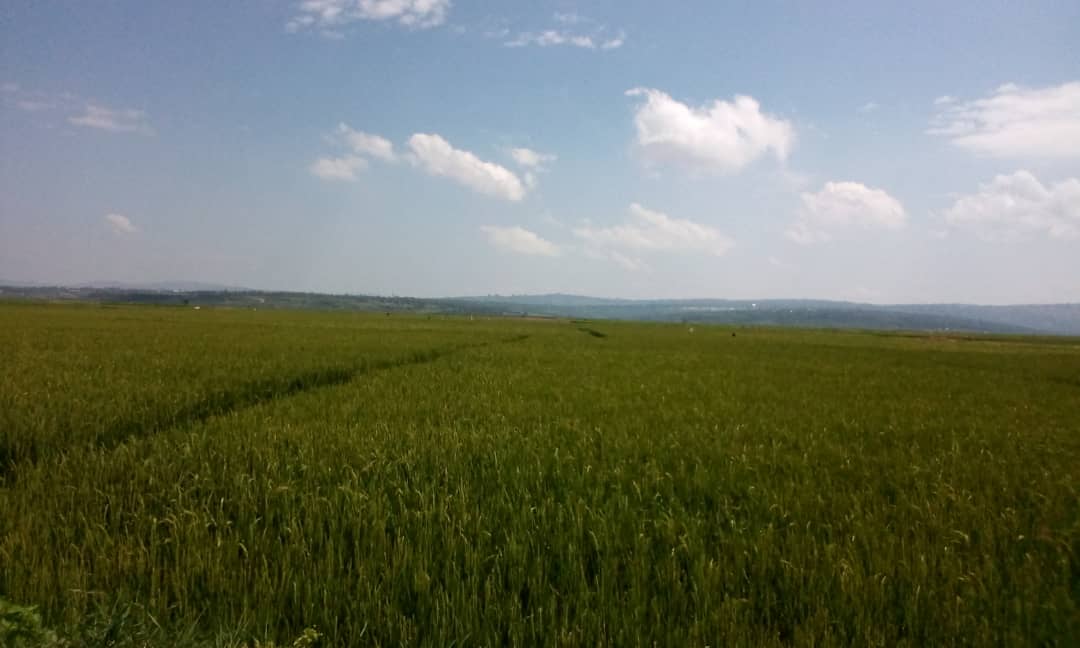By Annonciata Byukusenge
François Rwamunyana wakes up at five in the morning every day. His main activity consists of farming rice in a small 5-hectare farm in Rurambi swamp located at Rugazi, a remote rural village from the Bugesera district in Eastern Rwanda.
The 46-years-old father never envisioned that his efforts in the farmlands would pave the way for farmer workers in his remote village to pursue prosperous lives.
“Now TEKANA URISHINGIWE Muhinzi Mworozi playing a vital role in the rice farming, contributing to current national efforts towards improving food security,” he said.
Rwamunyana is a rice farmer by profession from 2013. Before joining Crops and animals covered under National Agriculture Insurance, he suffered losses due to disasters and was not able to produce.
“In 2017, the unseasonal rains affected farmers, because we did not produce anything in this season. We did not have crops insurance. In 2018, the flood took away the rice and we went bankrupt. In 2020 also flood affected our rice farming, but the insurance compensated us because the crops insurance program established in 2019.”
He added that they get capital insurance not production insurance. For the rice destroyed by floods in 2020, the insurance compensated him one hundred thousand Rwanda francs (100.000 frws).
Now TEKANA is a way of becoming rich for the farmers through crops and livestock. The tuition fees is 9.000 Rwfrs per season.
Challenges
Farmers have a challenge on Crops and animals covered under National Agriculture Insurance, because it compensate capital only. They suggest to compensate the production too even if is necessary they will require increasing tuition fees.
“To compensate capital only is an achievement because before to establish insurance for crops and animal the losses were too much. But we need the insurance for production, because the capital is too small than the production we expect.”
Crops and livestock animals /birds insured are Maize for consumption, Maize for seed multipliers, Irish potatoes, Chili Cassava, Soya bean, Beans and French beans. The livestock insured are Cattle both dairy cows and bulls, Piggery, Poultry and Aquaculture/Fish.
The contract between a farmer and Insurance Company is that the compensate transfer to the farmer in 30 days. A farmer pays 30% and the government pays 70%.
Key Achievements:
- 568,563 crop farmers (337,422 males and 231,141 females) benefited from the GoR subsidy under the program “TEKANA URISHINGIWE Muhinzi Mworozi”,
- 95,398 livestock keepers (72,131 males and 13,267 females) and 61 SMEs benefited from the GoR subsidy under the program “TEKANA URISHINGIWE Muhinzi Mworozi.”
The impact of agricultural insurance on farmers so far
- 9,368,318,355 Frw in premiums has been collected and paid by farmers. TEKANA is contributing to the diversification of insurance products, primarily for low-income people.”
- 3,747,327,342 Frw has been paid by the GoR as a 40% contribution to help farmers access insurance products.
- 5,309,388,565 Frw has been paid to farmers as compensation for losses to insured crops and livestock: Frw 2,455,065,699 (73% loss ratio) paid to livestock keepers and Frw 2,854,322,866 (46% loss ratio) paid to crop farmers.

